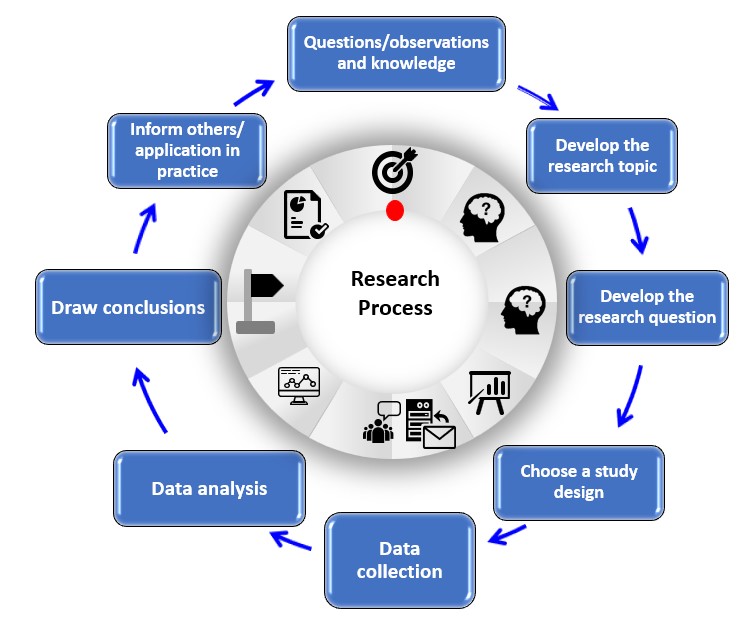
The Unfinished Symphony of Self-Governance: Researching Tribal Sovereignty in the 21st Century
WASHINGTON D.C. – In the tapestry of American governance, a distinct and often misunderstood thread weaves through the fabric: tribal sovereignty. It is not a privilege granted, but an inherent right predating the formation of the United States, continuously affirmed and challenged through centuries of treaties, legislation, and court decisions. For the 574 federally recognized Native American tribes, sovereignty is the bedrock of self-determination, dictating their ability to govern their lands, protect their cultures, and ensure the well-being of their citizens.
Yet, this intricate dance of nation-to-nation relations is far from settled. The complexities of history, law, economics, and culture present a rich, urgent, and often contentious landscape for scholarly inquiry. As tribes assert their self-governance more vigorously, and as the broader society grapples with issues of justice and equity, the need for rigorous, nuanced research into tribal sovereignty has never been more critical. This article delves into key research topics illuminating the multifaceted nature of tribal sovereignty today, offering a roadmap for understanding its challenges, triumphs, and future trajectory.
I. Legal and Jurisdictional Labyrinths: Navigating a Checkerboard of Authority
Perhaps no area of tribal sovereignty is as dense and debated as its legal and jurisdictional framework. Tribal nations operate within a unique legal paradigm, often described as "domestic dependent nations" by the U.S. Supreme Court in Cherokee Nation v. Georgia (1831), a phrase that simultaneously acknowledges their sovereignty while asserting federal supremacy. This dualistic status creates a "checkerboard" jurisdiction where federal, state, and tribal laws often overlap, conflict, or leave gaps.
Key research questions in this domain include:

- Jurisdictional Conflicts in Criminal and Civil Law: How do tribes assert and enforce their criminal and civil jurisdiction over non-Natives on tribal lands, especially given limitations imposed by cases like Oliphant v. Suquamish Indian Tribe (1978) which stripped tribes of criminal jurisdiction over non-Indians? The Violence Against Women Act (VAWA) reauthorizations in 2013 and 2022 restored some tribal criminal jurisdiction over non-Indian perpetrators in specific domestic violence and related cases – what are the practical impacts and challenges of this restoration?
- The Plenary Power Doctrine: How has the concept of Congress’s "plenary power" over Indian affairs shaped the evolution of tribal sovereignty, and what are its contemporary implications for tribal self-governance and economic development?
- Water Rights and Resource Management: Given the increasing scarcity of water and other natural resources, how are tribal reserved water rights (established by Winters v. United States, 1908) being litigated, negotiated, and managed in the 21st century? What legal mechanisms are effective for tribes to protect their environmental resources from external threats?
- Tribal Court Systems and Legal Pluralism: How do tribal court systems develop and operate, balancing traditional legal customs with Western jurisprudence? What is the impact of tribal court decisions on justice outcomes, and how do they interact with state and federal courts? Research here could explore the effectiveness of peacemaking circles and other Indigenous legal traditions.
II. Economic Development and Self-Sufficiency: Beyond the Casino Floor
While gaming often dominates the public perception of tribal economies, it represents only one facet of a much broader and more complex landscape. Tribal nations are increasingly diversifying their economies, pursuing self-sufficiency not merely for profit, but as a means to fund essential government services, create jobs, and foster community well-being.
Research topics include:

- Diversification Strategies: What are the most successful models for tribal economic diversification beyond gaming, including ventures in renewable energy, tourism, manufacturing, technology, agriculture, and healthcare? What factors contribute to their success or failure?
- Access to Capital and Infrastructure: What are the barriers tribes face in accessing capital, developing critical infrastructure (broadband, transportation, utilities), and attracting external investment? How do federal programs like the Indian Community Development Block Grant (ICDBG) or Native CDFIs (Community Development Financial Institutions) impact tribal economic growth?
- Sovereignty-Based Development: How does the assertion of tribal sovereignty influence economic development strategies? For instance, how do tribes leverage their unique regulatory authority, cultural assets, or land bases to create competitive advantages? This could involve examining the "nation-building" approach to economic development, which emphasizes strong tribal institutions and cultural alignment.
- Impact of Federal Policy on Tribal Economies: How do federal policies, regulations, and funding mechanisms (or lack thereof) either facilitate or impede tribal economic self-determination? This could include tax policies, trade agreements, and specific industry regulations.
III. Environmental Stewardship and Resource Management: Traditional Knowledge Meets Modern Challenges
Indigenous peoples have long been stewards of the land, possessing deep Traditional Ecological Knowledge (TEK) developed over millennia. As climate change accelerates and environmental threats intensify, tribal nations are at the forefront of conservation efforts, often fighting to protect lands and resources vital to their cultural and physical survival.
Areas for critical research include:
- Integration of Traditional Ecological Knowledge (TEK): How can TEK be effectively integrated into contemporary environmental policy, resource management plans, and climate change adaptation strategies? What are the challenges and successes of co-management agreements between tribes and federal/state agencies?
- Climate Change Impacts and Adaptation: How are tribal communities disproportionately affected by climate change (e.g., sea-level rise, drought, extreme weather, forced relocation)? What innovative, culturally appropriate adaptation and mitigation strategies are tribes developing and implementing?
- Protection of Sacred Sites and Cultural Resources: What legal and political mechanisms are most effective for tribes to protect sacred sites, cultural landscapes, and traditional hunting/fishing grounds from development, desecration, or environmental degradation? This includes examining the Native American Graves Protection and Repatriation Act (NAGPRA) and its effectiveness.
- Environmental Justice and Tribal Communities: How do environmental injustices, such as the disproportionate siting of hazardous waste facilities or resource extraction projects, impact tribal health, sovereignty, and self-determination? What legal and community-based strategies are effective in achieving environmental justice for Indigenous populations?
IV. Cultural Preservation and Language Revitalization: Rekindling the Flames of Identity
The assault on Indigenous cultures and languages has been a tragic chapter in American history, from forced assimilation through boarding schools to the suppression of spiritual practices. Today, tribal nations are leading powerful movements to revitalize their languages, preserve traditional arts, ceremonies, and knowledge systems, and reclaim their cultural identities.
Research topics in this vital area include:
- Language Revitalization Programs: What are the most effective strategies for Indigenous language revitalization, including immersion schools, master-apprentice programs, and digital tools? How do these programs impact community well-being, cultural identity, and educational outcomes?
- Cultural Resurgence and Community Health: How does cultural revitalization—including the return to traditional foods, ceremonies, and governance practices—contribute to improved physical and mental health outcomes in tribal communities, particularly in addressing historical trauma?
- Repatriation and Cultural Heritage: Beyond NAGPRA, what are the ongoing challenges and successes in the repatriation of ancestral remains, sacred objects, and cultural patrimony from museums and private collections? How does repatriation contribute to healing and cultural continuity?
- Youth Engagement and Intergenerational Knowledge Transfer: How are tribal communities engaging their youth in cultural preservation efforts, ensuring the intergenerational transfer of knowledge and traditions? What role do elders play in these processes, and how can their wisdom be best preserved and shared?
V. Health, Education, and Social Well-being: Building Resilient Communities
Generations of colonial policies have resulted in significant disparities in health, education, and social well-being for Native American communities. However, tribal nations are actively developing and implementing culturally relevant, sovereignty-driven solutions to address these challenges, often outperforming federal and state programs.
Key research avenues include:
- Culturally Competent Healthcare Models: What are the impacts of tribally run health clinics and health programs that integrate traditional healing practices with Western medicine? How do these models address specific health disparities (e.g., diabetes, heart disease, mental health, substance abuse) more effectively than mainstream services?
- Addressing Historical Trauma and Intergenerational Healing: How does historical trauma manifest in contemporary tribal communities, and what are effective, culturally appropriate interventions for healing and resilience-building? This includes examining the role of traditional ceremonies, storytelling, and community-led initiatives.
- Sovereignty in Education: How do tribally controlled colleges and universities (TCUs) and tribal school systems promote academic achievement, cultural identity, and self-determination? What are the benefits of Indigenous-focused curricula and teaching methodologies?
- Tribal Child Welfare and Family Services: How do tribal nations implement their own child welfare codes and programs under the Indian Child Welfare Act (ICWA), and what are the outcomes for Native children and families? What are the challenges and successes of these tribally-driven approaches compared to state systems?
VI. Political Engagement and Intergovernmental Relations: A Nation-to-Nation Dialogue
Tribal nations are increasingly assertive political actors, engaging with federal, state, and local governments to protect their interests and advance their sovereign rights. This involves complex negotiations, advocacy, and coalition-building.
Research areas include:
- Tribal Influence on Federal Policy: How do tribal organizations (e.g., National Congress of American Indians, NCAI) and individual tribes influence federal policy and legislation? What are the mechanisms of tribal consultation, and how effective are they?
- State-Tribal Relations: What are the models for effective state-tribal government-to-government relations, moving beyond historical conflicts to cooperative agreements on issues like taxation, law enforcement, and resource sharing?
- Voting Rights and Political Participation: What are the ongoing challenges to Native American voting rights, and what strategies are tribes and advocacy groups employing to ensure full political participation and representation?
- International Indigenous Rights: How do tribal nations engage with international bodies and human rights frameworks (e.g., the UN Declaration on the Rights of Indigenous Peoples) to strengthen their sovereignty and advocate for Indigenous rights globally?
Conclusion: The Enduring Pursuit of Self-Determination
The research topics outlined above represent just a fraction of the vital work being done to understand and support tribal sovereignty. From the intricate legal battles over jurisdiction to the quiet resurgence of an ancient language, each area reflects the resilience, innovation, and enduring spirit of Indigenous peoples.
As Professor Robert A. Williams Jr. (Lumbee), a leading scholar of federal Indian law, once noted, "The story of tribal sovereignty is the story of the persistent human quest for self-determination." It is a dynamic, evolving narrative, constantly shaped by historical legacies, contemporary challenges, and the unwavering resolve of tribal nations to govern themselves. For researchers, policymakers, and the public alike, engaging with these critical topics is not merely an academic exercise; it is an essential step towards fostering a more just, equitable, and informed future for all. The unfinished symphony of self-governance continues, and its notes resonate with the promise of a truly nation-to-nation relationship.

